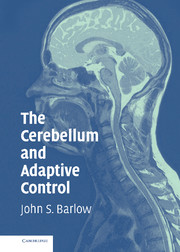Book contents
- Frontmatter
- Contents
- Preface
- Acknowledgments
- PART ONE ANATOMY AND PHYSIOLOGY OF THE CEREBELLAR SYSTEM
- 1 Introduction
- 2 Comparative Anatomy of the Cerebellum
- 3 Anatomy and Physiology of the Cerebellar Cortex
- 4 The Mossy Fiber Afferent System
- 5 The Inferior Olivary System and the Climbing Fibers
- 6 The Cerebellar Nuclei and Their Efferent Pathways: Voluntary Motor Learning
- PART TWO CEREBELLAR FUNCTIONS
- PART THREE MODELS AND THEORIES
- PART FOUR SUMMARY AND CONCLUSIONS
- APPENDIX A A Hybrid Analogue/Digital Multiplexer/Multiplier-Based Adaptive Signal Processor
- Author's Note
- Bibliography
- Index
2 - Comparative Anatomy of the Cerebellum
Published online by Cambridge University Press: 28 October 2009
- Frontmatter
- Contents
- Preface
- Acknowledgments
- PART ONE ANATOMY AND PHYSIOLOGY OF THE CEREBELLAR SYSTEM
- 1 Introduction
- 2 Comparative Anatomy of the Cerebellum
- 3 Anatomy and Physiology of the Cerebellar Cortex
- 4 The Mossy Fiber Afferent System
- 5 The Inferior Olivary System and the Climbing Fibers
- 6 The Cerebellar Nuclei and Their Efferent Pathways: Voluntary Motor Learning
- PART TWO CEREBELLAR FUNCTIONS
- PART THREE MODELS AND THEORIES
- PART FOUR SUMMARY AND CONCLUSIONS
- APPENDIX A A Hybrid Analogue/Digital Multiplexer/Multiplier-Based Adaptive Signal Processor
- Author's Note
- Bibliography
- Index
Summary
If we can discover what functional factors were primitively concerned in the initial differentiation of the cerebellum from preexisting bulbar structures and some of the steps by which additional functional systems of diverse kinds were drawn into the cerebellar complex, some light may be shed on the great problems of the analysis of higher cerebellar functions.
(C. J. Herrick 1924b)It is from the standpoint that a brief survey of the circumstances under which the cerebellum and its Purkinje cells developed in phylogeny could shed some light on the evolution of its organization and functions in higher forms that this review, mostly from classical sources, is presented. This survey is based primarily on the following sources: Ariëns Kappers, Huber, and Crosby (1960), Crosby (1969), Herrick (1924a, 1924b), Larsell (1967), Larsell and Jansen (1972), Llinás (1969), Llinás and Hillman (1969), Nieuwenhuys (1967), Schnitzlein and Faucette (1969), Butler and Hodos (1996), and Nieuwenhuys, ten Donkelaar, and Nicholson (1998). Some additional aspects of comparative anatomy of the cerebellum are included in Chapter 12, which discusses cerebellar-like structures in certain fish, including the valvula of mormyrid fish, the electrosensory lobe, and the mammalian dorsal cochlear nucleus.
Origins of the Cerebellum
Larsell (1967; pp. 6–7) summarized the early phylogeny of the cerebellum as follows:
The primitive predominantly vestibular and lateral-line organ cerebellum of the lampreys [eel-like fish with a round mouth] is continued in the sluggish urodeles [tailed amphibians] and higher forms as a laterally situated vestibular and lateral-line subdivision, medial to which develops a corpus cerebelli whose fiber tract connections are quite different.[…]
- Type
- Chapter
- Information
- The Cerebellum and Adaptive Control , pp. 7 - 13Publisher: Cambridge University PressPrint publication year: 2002

